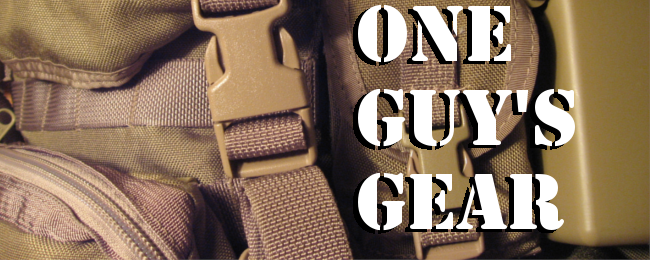Apr 7, 2010
Gun Gear: EOTech 511.A65/1 and GG&G Lens Covers
Make: EOTech
Model: EOTech 511.A65/1 holographic weapon sight
As usual, I won't even attempt to do an in-depth review of the EOTech given that the interweb is full of more expert opinions than mine. I will simply share my own impressions...
This is the "shorty" model of the basic EOTech sight which uses two N-sized 1.5V batteries.
I actually bought the AA model first, but with the way I had to position it on the top rail, the front of the sight would hang out past the receiver and extend over the barrel by just a little bit. For some reason, this really bothered me. Looking back, I think it was pure aesthetics.
So I returned the AA model and got the shorty N-sized model. Granted, it does look better, but it was probably a mistake overall. Not only does the N-size have a shorter battery life, but none of my other gear uses these batteries. And even worse, they're a little more expensive.
Note that EOTech has discontinued these, though you can still find them brand new at many retailers. Unless you're just looking to save cash, I would just skip this model entirely and get one of the newer ones that among other things has the buttons on the left side instead of the rear for compatibility with magnifiers. New models can also use CR123A batteries which many tactical lights also use.
Aesthetics aside, it's been a rock-solid sight. I also like having EOTech's reticle-inside-the-ring setup. I actually use the 65 MOA ring like mil-dots sometimes. For example, because the reticle is zeroed for 50 yards, it turns out that the bottom of the ring equals point of impact at about 7 yards. Therefore, at any range between 7 and 50 yards I know impact will be between the reticle and the bottom of the ring.
The only problem I've had with the scope appears to be a documented one, in which the sight will for some reason continue to draw power from the batteries even when fully off. This means you may put in fresh batteries only to find them dead a month later without ever having even used the rifle.
Apparently, however, if you remove the batteries and wait 5 minutes before putting them back in, it forces the sight's firmware to fully reset and this is supposed to cure the problem. I'm currently testing to see if this indeed solves it for me...
Make: GG&G
Model: Hood and lens covers (#GGG-1275)
Even though my rifle doesn't see too much time in the bush getting knocked around, I still do my best to keep the EOTech lenses safe and clean. Until switching to the GG&G plastic covers, I'd been using a simple neoprene cover, but found that it fell off too easily and it's also just one more thing to stash and keep track of when you're shooting at the range.
Most of the online descriptions of these covers don't really explain exactly how they get installed, though. I was under the impression that there was simply a front cover and rear cover, and that they attached to the main housing of the EOTech, similar to conventional covers that just attach directly to the body of the scope.
In reality, the two covers themselves actually attach to a rubber housing that you need to install underneath the plastic body of the EOTech sight itself. So all you need to do is remove the EOTech plastic body (they provide you with wrenches) and fit the rubber housing to the inside.
The tricky part is getting the whole thing back into place as the combined housing now makes for an extremely tight fit as you try to slide it back into place over the sight itself. The instructions warn you ahead of time that it may take some elbow grease and they recommend a dab of dishwashing liquid for lubrication.
I ended up using a lot more than a dab, though, and it was still an effort to get it back on. Not only is it a very tight fit, but there weren't any convenient ways to get good leverage if you're only using hands and fingers. But of course, once you finally get it on it means the entire thing is tight and rattle free.
I do like and recommend the covers. The only thing that took some getting used to is that they don't really "snap" shut easily the way conventional covers do. I think it's because you basically have the hard plastic of the cover meeting the softer rubbery body when they close. It means you sometimes have to "work" the covers into the rubber housing until they're fully shut.
But they do pop open very quickly and cleanly, and it's usually more important to get them open than to get them closed.
Subscribe to:
Post Comments (Atom)





No comments:
Post a Comment